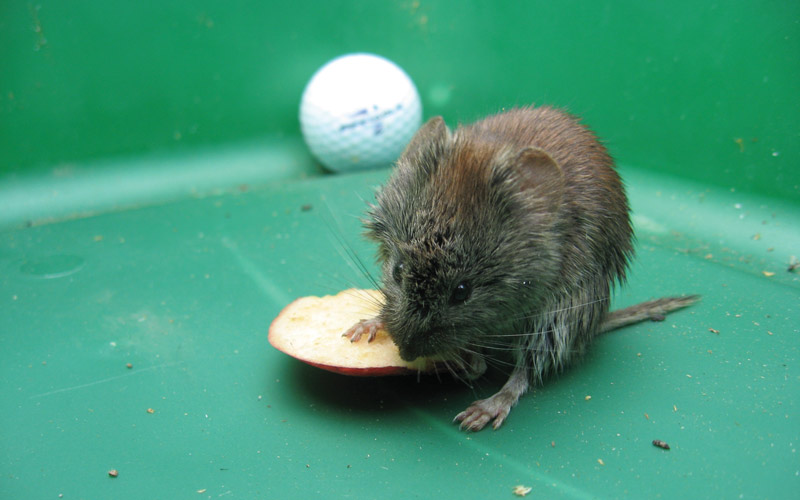Vole Control Tips to Preserve Your Yard and Gardens
Vole Control Tips to Preserve Your Yard and Gardens
Blog Article
Comprehensive Guide to Efficient Vole Pest Control: Infestation Recognition and Therapy Methods
In the realm of effective bug control, vole infestations position a special difficulty that demands a strategic strategy. By checking out the subtleties of vole actions, understanding vital indications of infestation, and examining a range of control choices, one can establish a detailed technique to fight these elusive insects.
Recognizing Vole Actions
Vole habits is defined by their tunneling routines and fast recreation rates, making them a difficult parasite to regulate successfully. These tiny rodents generally produce complex tunnel systems underground, using them for shelter, food storage, and transport. Voles are herbivores, eating a range of plants, origins, light bulbs, and grasses, which can trigger substantial damages to gardens, orchards, and yards. Their quick reproductive rate additional makes complex control initiatives, with ladies with the ability of producing several trashes in a single year, each including numerous children.
Voles are most active during the very early morning and evening hours, spending most of their time foraging for food. Their tunneling behaviors not only disrupt yards and lawns but additionally make them testing to identify and get rid of. Recognizing vole actions is crucial for reliable parasite control techniques. By determining their burrow locations, checking feeding locations, and applying targeted control methods, such as trapping or environment alteration, vole infestations can be handled efficiently.
Indicators of Vole Invasion

Avoidance Techniques
Implementing reliable prevention techniques is critical in decreasing vole problems and securing plants from their destructive feeding practices. To stop vole invasions, it is essential to start by getting rid of potential food resources and sanctuary.
Consistently examining the residential or commercial property for signs of vole task, such as paths and burrow openings, is important for very early detection and punctual action. If vole activity is thought, think about utilizing traps or repellents purposefully placed near their pathways.
Non-Lethal Control Techniques
To properly take Get More Info care of vole populaces while prioritizing humane techniques, non-lethal control approaches supply useful remedies for reducing vole damages in landscapes and gardens. One efficient method is making use of physical barriers such as hardware towel or wire mesh to protect at risk plants. These obstacles can be buried at the very least 12 inches deep and curved at a 90-degree angle to avoid voles from delving underneath. Additionally, environment alteration can deter voles by lowering their liked food sources and hiding places. Preserving a well-mowed grass, getting rid of particles, and Recommended Reading maintaining plants trimmed can make the atmosphere less enticing to voles.

Lethal Control Options
One reliable technique for resolving vole invasions in landscapes and yards involves the strategic use dangerous control alternatives. When confronted with an extreme vole invasion that non-lethal techniques have actually failed to contain, applying deadly control procedures comes to be critical. One frequently employed lethal control alternative is making use of snap traps. These more tips here traps are designed to swiftly and humanely kill voles upon activation, making them a preferred choice for many gardeners and landscaping companies. To boost the efficiency of snap traps, it is recommended to position them in areas where vole task is high, such as along paths or near burrow entryways. An additional deadly control choice is the utilization of harmful baits particularly created to target voles. These lures include poisonous substance that is consumed by the voles, causing their eventual death. However, care should be worked out when using toxic lures to avoid harm to non-target animals or pets. On the whole, when using deadly control options, it is necessary to do so properly and according to local guidelines to properly manage vole problems.
Conclusion
To conclude, effective vole pest control needs a detailed understanding of vole behavior, identification of signs of invasion, execution of avoidance techniques, and usage of both non-lethal and deadly control techniques. By combining these methods, individuals can efficiently take care of vole populations and shield their building from damage. It is crucial to resolve vole problems without delay to stop additional problems and minimize the influence on the surrounding setting.
Offered the complex tunnel systems and rapid recreation prices characteristic of voles, identifying the indications of vole infestation ends up being necessary in reliable parasite control. One of the key indicators of vole presence is the visibility of surface area runways or tracks in yard or snow, generally concerning 1-2 inches broad, produced as voles travel in between their burrows and food resources.To successfully manage vole populations while prioritizing humane methods, non-lethal control methods use practical services for decreasing vole damages in landscapes and yards.One efficient method for addressing vole problems in landscapes and yards involves the strategic usage of dangerous control choices. vole control.In conclusion, efficient vole insect control requires a detailed understanding of vole actions, identification of indicators of infestation, execution of avoidance approaches, and utilization of both non-lethal and lethal control approaches
Report this page